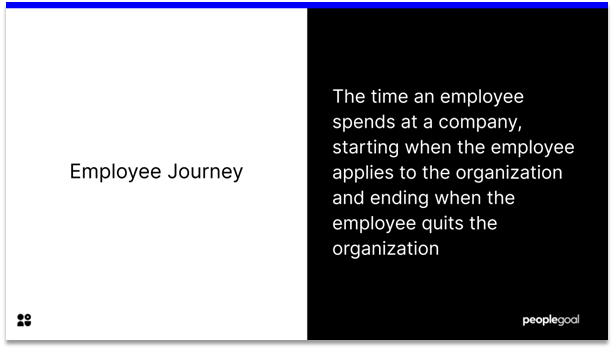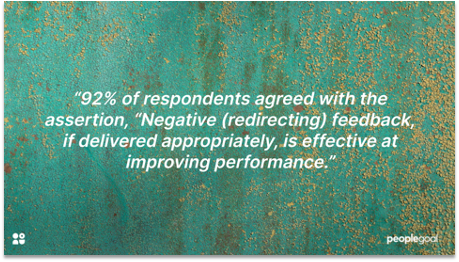It may seem like a bit of a Schrodinger’s cat situation: how can you observe your employee engagement while not disturbing it? Unfortunately we can’t simply ask everyone, “Are you engaged?” but we can use a bit of the scientific method to develop engagement surveys that produce meaningful, actionable data. First we have to define what we really mean by “employee engagement” and why you should be concerned with measuring it.
What is employee engagement?
Gallup, who has studied employee behaviour and engagement for over 35 years, defines an engaged employee as someone who is “involved in, enthusiastic about and committed to their work and workplace.” To take this idea further, Mike Rickheim of Newell Rubermaid reminds us that engagement is "more than just a warm, fuzzy thing. It’s about giving people the tools they need to succeed in their careers, which in turn drives the outcomes that we’re seeking in the marketplace.”
Having a workforce of engaged employees can make a real impact on business performance. We might naturally expect that engaged employees are more likely to stay with their organization and recommend the company to others, but Gallup also found that companies with engaged employees outperform their competition in earning per share by 147%. Sadly they also found that on average only about 15% of workers worldwide are engaged.
One more thing to keep in mind as you design a process and survey to measure employee engagement: 70% of the variance in how engaged employees are can be tied back to their managers. Regardless of what organizational efforts you put forth, it’s reasonable to assume that the way an employee sees their direct manager is a large part of how they feel about the whole company.
Now that we understand what employment engagement looks like and why its worth the effort to measure it and tie it to company performance, we can get down to brass tacks. Here’s some tips and advice to nail your engagement survey.
Anonymous and they know it
It’s generally advisable to make the survey anonymous, but don’t forget to stress that fact with participants. If you’re using a vendor to run the survey (bonus points if they support fully customisable and automated surveys you can reinforce that fact with employees before they begin. They’ll feel comfortable knowing they can be totally honest and not singled out based on the results.
Communicate, Communicate, Communicate
Just as you are likely eager to know the results of the results of your engagement survey, so is everyone else! It won’t be possible to address every concern that is raised from your survey, but the first step is to acknowledge the issue. If the problem can’t be solved right away, it will be an easier pill to swallow if employees understand why and know that they are being heard. Find more in-depth information about communicating results here.
Make employees the customers
Customer experience or employee experience? NPS or eNPS? The real question is “why not both?” If you’re already set up to monitor how your customers feel about your company then you’re already at an advantage to bring those insights internally. Think of employees just like customers: more than just revenue or talent but a potential brand ambassador who willingly buys in to and promotes your brand.
Keep it short
Responses to surveys trail off the longer they are, and to get a true pulse of engagement you’ll want to get as many responses as you can. Aim for the 10 minute/20 question range for online surveys and let your participants know up front what to expect so they can plan to complete it when they are comfortable and have time to reflect.
Be inclusive
While there are certain cases for targeted surveys, at least one of your initiatives should include all employees. This isn’t just a suggestion to get your numbers up; it’s also a push to get representative data. Each employee experience is valuable and can give insights to larger, underlying concerns.
Timing
There is no magic formula here, but the timing and quantity of your surveys is an important element. Think about the average turnover, your performance review process and other large milestones your employees are working towards throughout the year. Shorter pulse surveys can be sent more regularly, while your longer, comprehensive survey to all employee might be better timed every 6 months or so.
Reverse engineer it
All the definitions of employee engagement can only go so far – your definition will be different because engagement is tied to your purpose. Start by thinking of what your organization does and how that’s accomplished, then create a persona of what an engaged employee would look like in a perfect state. What real-world obstacles might be standing in the way of employees reaching their full potential? You don’t have to ask leading questions, but this strategy can help you include topics that you might not otherwise have thought of.
Think cause and also effect
The highest performer in your company is not necessarily the most engaged. The team that needs the most improvement might not be the most likely to leave. Take the time to consider, and ask about, extenuating circumstances that make particular roles more difficult than others.
Frame and phrase
While the long game might be to increase productivity, customer happiness and the like – don’t forget the immediate payoff: to have a genuine sense of how employees feel and what you can do to make them successful. Posit the survey and questions in such a way that it’s clear the interest of employees is considered and their feedback is appreciated. Basically, don’t be like Dilbert’s boss.
Ask for feedback
You don’t necessarily need to make a survey to get feedback on the questions and the process. As you refine the timing and delivery of the survey, it’s also good to update the questions based on what’s most relevant and which topics are generated the most responses.
Ready to look inside the box? We’re here to help. Schedule a demo with PeopleGoal this week to find how you can get a free survey to use with your company.
Ready to 3x Your Teams' Performance?
Use the best performance management software to align goals, track progress, and boost employee engagement.






